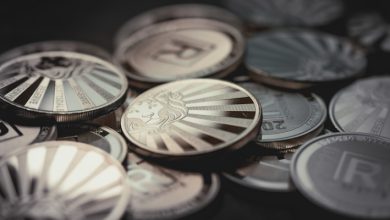The Role of NFTs in Blockchain Ecosystems

- The Basics of NFTs and How They Work
- The Evolution of NFTs in the Blockchain Space
- The Impact of NFTs on Digital Ownership
- The Potential of NFTs for Artists and Creators
- Challenges and Opportunities in the NFT Market
- The Future of NFTs and Their Role in Blockchain Ecosystems
The Basics of NFTs and How They Work
NFTs, or non-fungible tokens, have gained significant attention in blockchain ecosystems due to their unique properties and potential impact on various industries. Unlike cryptocurrencies like Bitcoin or Ethereum, NFTs are indivisible and cannot be exchanged on a like-for-like basis.
One of the key features of NFTs is their ability to represent ownership or proof of authenticity of digital or physical assets. This is achieved through the use of smart contracts, which are self-executing contracts with the terms of the agreement directly written into code. When an NFT is minted, a unique token is created on the blockchain, providing a digital certificate of ownership that cannot be duplicated or tampered with.
When it comes to how NFTs work, they are typically bought and sold on online marketplaces using cryptocurrency. Each NFT has a unique identifier that distinguishes it from other tokens, making it one-of-a-kind. This uniqueness is what gives NFTs their underlying value, as collectors and investors are willing to pay a premium for owning a piece of digital art, music, video, or other digital assets.
The Evolution of NFTs in the Blockchain Space
The evolution of NFTs in the blockchain space has been a fascinating journey to witness. NFTs, or non-fungible tokens, have revolutionized the way digital assets are bought, sold, and traded on the blockchain. These unique tokens represent ownership of a specific digital asset, whether it be a piece of art, a collectible, or even virtual real estate.
Initially, NFTs were primarily used within the gaming and digital art communities. However, as the technology has advanced and become more widely adopted, NFTs have found their way into various other industries such as music, sports, and even real estate. This expansion of use cases has led to a surge in popularity and demand for NFTs, with some tokens selling for millions of dollars.
One of the key benefits of NFTs is their ability to provide provenance and authenticity to digital assets. By tokenizing an asset on the blockchain, its ownership and transaction history can be easily verified and traced back to the original creator. This has opened up new possibilities for artists, musicians, and other creators to monetize their work in a secure and transparent manner.
As the use of NFTs continues to grow, we can expect to see even more innovation in the space. From decentralized marketplaces to interoperable tokens that can be used across multiple platforms, the future of NFTs is bright. With blockchain technology at the core, NFTs are poised to revolutionize the way we buy, sell, and own digital assets for years to come.
The Impact of NFTs on Digital Ownership
NFTs have revolutionized the concept of digital ownership by providing a unique way for individuals to buy and sell digital assets securely on blockchain networks. Unlike traditional digital assets, non-fungible tokens are indivisible and cannot be replicated, making them one-of-a-kind and valuable to collectors and investors alike.
One of the key impacts of NFTs on digital ownership is the ability to prove ownership and authenticity of a digital asset. Through the use of blockchain technology, each NFT is assigned a unique token ID, which is stored on the blockchain and can be verified by anyone. This ensures that the digital asset is authentic and cannot be duplicated or tampered with, providing a sense of security and trust for both buyers and sellers.
Furthermore, NFTs have opened up new opportunities for creators to monetize their digital creations. Artists, musicians, and other content creators can tokenize their work as NFTs and sell them directly to their fans, cutting out middlemen and increasing their revenue potential. This direct connection between creators and consumers has the potential to revolutionize the digital content industry and empower creators to take control of their own work.
Overall, the impact of NFTs on digital ownership is significant and has the potential to reshape the way we buy, sell, and collect digital assets. With the increased security, authenticity, and revenue potential that NFTs provide, they are poised to play a key role in the future of blockchain ecosystems.
The Potential of NFTs for Artists and Creators
The potential of non-fungible tokens (NFTs) for artists and creators in blockchain ecosystems is immense. NFTs have revolutionized the way artists can monetize their work and engage with their fans. These unique digital assets are creating new opportunities for artists to showcase and sell their creations in a decentralized manner.
One of the key benefits of NFTs for artists is the ability to receive royalties every time their work is sold in the secondary market. This provides artists with a recurring source of income, unlike traditional art sales where they only receive payment once. Additionally, NFTs allow artists to reach a global audience without the need for intermediaries, giving them more control over their work and pricing.
Furthermore, NFTs enable artists to experiment with new forms of digital art that were previously difficult to monetize. From digital paintings to virtual reality experiences, artists can explore innovative ways to connect with their audience and create unique pieces that stand out in the crowded art market.
Overall, NFTs offer artists and creators a promising avenue to showcase their talents, connect with fans, and generate sustainable income streams. As the technology continues to evolve, the potential for artists to thrive in blockchain ecosystems will only continue to grow.
Challenges and Opportunities in the NFT Market
One of the main challenges in the NFT market is the issue of scalability. As the popularity of NFTs continues to grow, there is a need for blockchain networks to handle the increasing demand for transactions. This is particularly important for artists and creators who rely on NFTs to monetize their work. Without a scalable infrastructure, the market may struggle to keep up with the pace of innovation.
On the other hand, the NFT market also presents a number of opportunities for investors and collectors. NFTs have the potential to revolutionize the way digital assets are bought, sold, and traded. They offer a unique way to prove ownership and authenticity, making them highly sought after in the digital art world. As more industries begin to adopt NFTs, there is a growing opportunity for individuals to diversify their portfolios and invest in this emerging asset class.
Another challenge in the NFT market is the issue of interoperability. Currently, many NFTs are created on specific blockchain networks, making it difficult for users to transfer their assets across different platforms. This lack of interoperability can limit the liquidity of NFTs and hinder their adoption in mainstream markets. However, efforts are being made to address this issue, with projects like cross-chain bridges and interoperable standards seeking to create a more connected NFT ecosystem.
Despite these challenges, the NFT market is filled with potential for growth and innovation. As blockchain technology continues to evolve, NFTs are likely to play an increasingly important role in digital ecosystems. By addressing scalability issues, improving interoperability, and exploring new use cases, the NFT market has the opportunity to become a major player in the future of digital assets.
The Future of NFTs and Their Role in Blockchain Ecosystems
NFTs have gained significant traction in recent years, revolutionizing the way digital assets are bought, sold, and traded within blockchain ecosystems. These unique tokens have opened up a world of possibilities for creators, collectors, and investors alike.
Looking ahead, the future of NFTs in blockchain ecosystems appears to be promising. As more industries and individuals recognize the value of tokenizing assets, we can expect to see a continued growth in the NFT market. This growth will likely be driven by advancements in technology, increased mainstream adoption, and the development of new use cases.
One of the key roles that NFTs will play in blockchain ecosystems is in promoting digital ownership and authenticity. By creating a unique token that represents a specific asset, individuals can prove ownership of digital items in a secure and transparent manner. This has implications for various industries, including art, gaming, real estate, and more.
Furthermore, NFTs have the potential to democratize access to assets and opportunities that were previously limited to a select few. Through fractional ownership and trading on decentralized marketplaces, NFTs can enable a broader audience to participate in the digital economy and benefit from the value of their assets.



